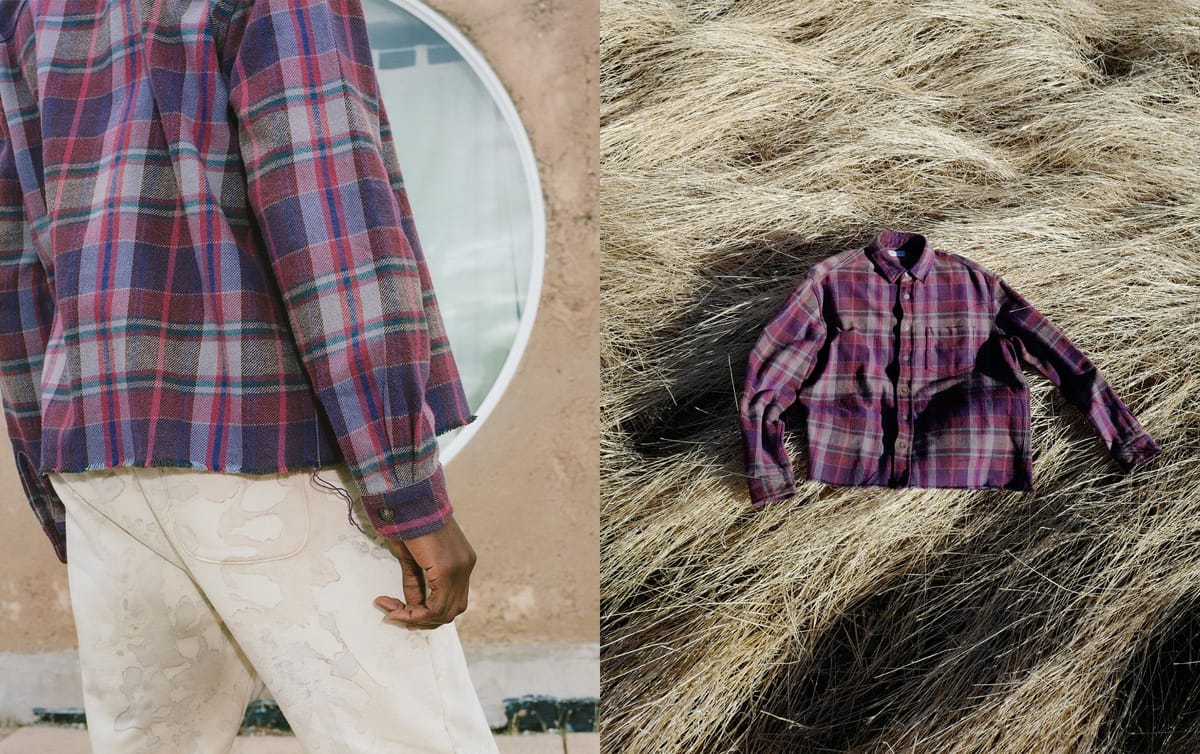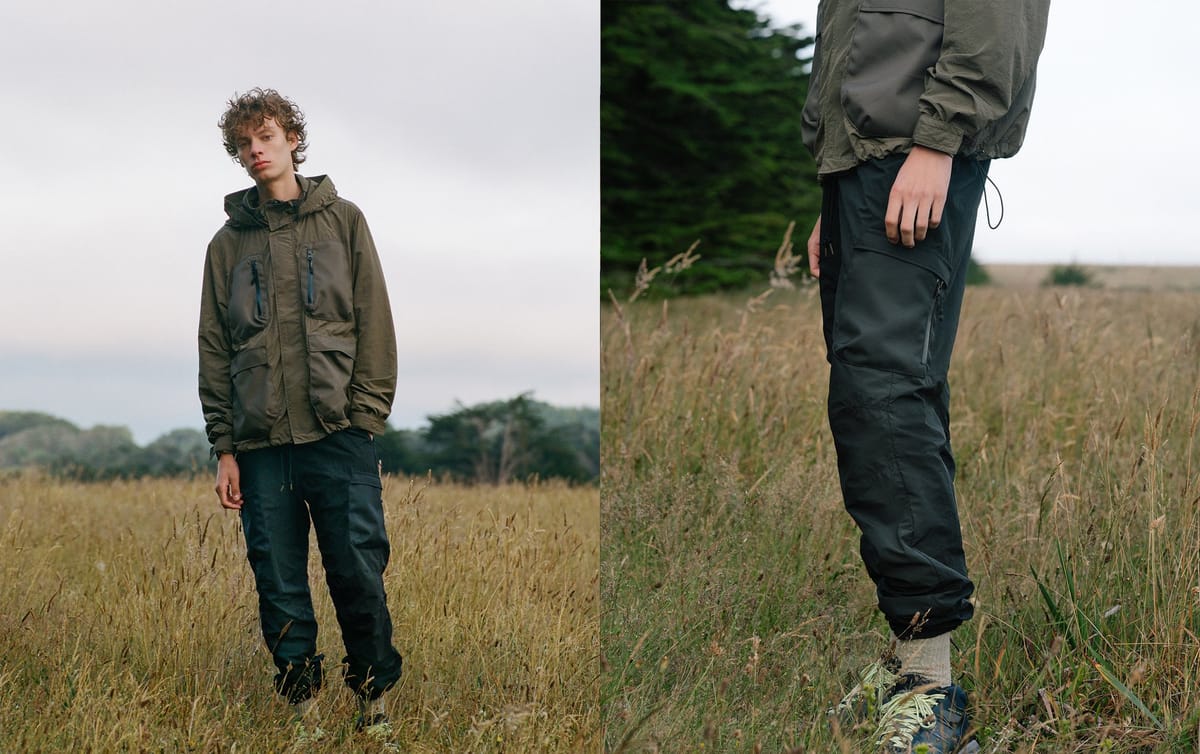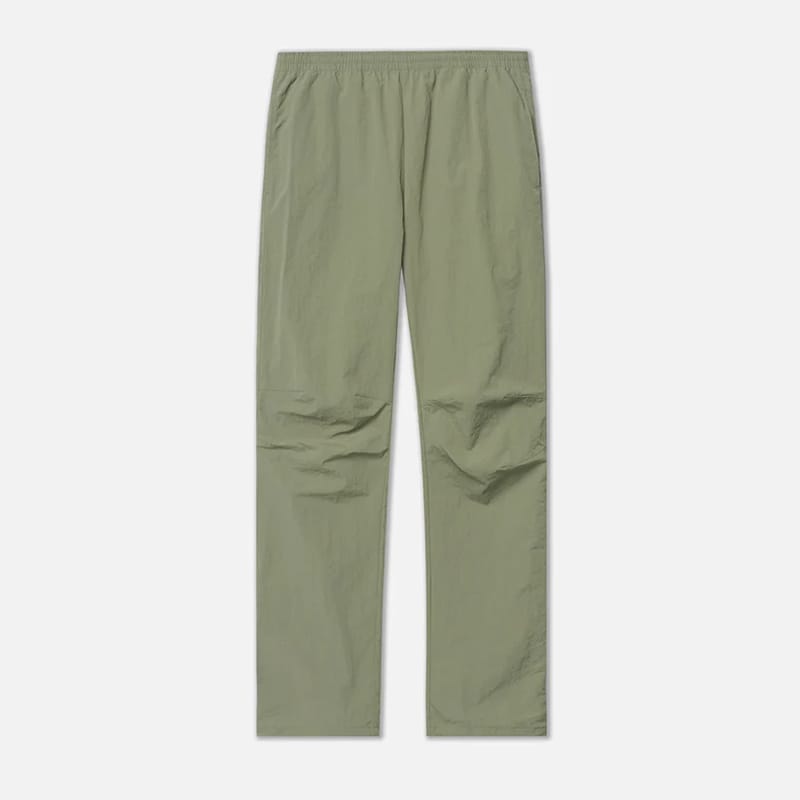
Review Summary
I thought my younger days of wearing joggers were behind me, I was definitely wrong. Lured in by the ankle cinch shock cord and interesting material mix, I couldn’t pass up the purchase. After rotating through 4 colors and a few winters, I’ve come to terms with the fact that I may be wearing joggers for longer than I care to admit. The John Elliott Himalayan pants can be considered a hybrid jogger. They can be worn as a regular pair or pants or cinched up along the bottom hem exposing the ankles. The elastic shock cords are secured in place with matte black John Elliott branded spring stop toggles, a nice detail no doubt.
After trying on a size medium and large, I chose to size down for a fit that was more tailored through the entire leg which did require a bit more stretch in the waist. I found this to be a more athletic look that avoided the bagginess in the upper thigh and lower calf. The elastic waist stretches up to 3 inches while also including an adjustable drawstring which allows for ease in fit selection.
Constructed from a cotton nylon blend, the material utilized in the Himalayan pants is the real deal sealer. It has a nice semi sheen finish to it that is lightweight yet holds a bit of texture. Because of the cotton, you don’t have that loud nylon whooshing noise every time you take a step, which is a major plus. From a strictly style standpoint, the Himalayan pants are in a league of their own if you’re seeking something outside of the traditional denim or chino.
Review Ratings
Pros:
- Easily the best looking and most comfortable pair of jogger style pants that I’ve owned
- Nylon and cotton blend is truly unique with a subtle texture that adds character and style
- Ankle cinch shock cord is a nice technical touch that outperforms elastic cuffs
- Subtle design details throughout make these feel like a special pair of pants
Cons:
- Not cheap! You’re wallet is likely to feel the pain at $328 per pair
- Relaxed fit might leave some/many needing to size down making for a slightly tighter waist
Review Details
John Elliott Himalayan Pants Sizing
Depending on how you prefer your pant style, you may need to take your true size or size down. This gets tricky with John Elliott as you need to pay great attention to the size charts since these pants don’t follow a typical waist number and cuts can vary by style. For context, I’m 5’11” weighing 170 pounds with a somewhat average to athletic build. I wear a size 32 in denim and a size large in outerwear and shirting. I purchased both the size 2-medium and size 3-large Himalayan pants to confirm the best fit for my proportions.
After trying on both sizes of the Himalayan pants, I was a bit torn on exactly which direction I wanted to go. The waist in the size 3-large which measures 33 inches felt more comfortable as there was hardly any stretch required of the elastic. The size 2-medium which measures 31 inches definitely needed to stretch a bit more, however, not so much that there was any discomfort or concern (although I will say that these are much more comfortable when I am closer to 165lbs). John Elliott notes that the elastic will stretch up to an additional 3 inches which makes it easy to size down if you're on the cusp. If you do prefer a looser fit and want to stick with your natural waist size, there are adjustable drawstrings to help securely tighten the Himalayan pants.
Where there is a real noticeable difference is in the width of the leg. John Elliott classifies these pants as relaxed fit and I can confirm that they do fit as such. I generally like a more tapered and slim leg in all of my pants and felt that the size 3-large was too baggy for my liking. With the ankle cuffs cinched up, there was a good amount of stacking that felt billowy and brought me back to my breakdance days. With the size 2-medium, the seat, thigh, knee, and lower leg is much more fitted without being overly snug or tight. This trim fit also caters to a more athletic aesthetic which is a selling point for me.
The length of the Himalayan pants are what I would classify as average to slightly short. This obviously greatly depends on your overall height and proportions, but these pants were made to be worn either perfectly straight, resting on the top of the shoe or slightly bunched up with the shock cord secured. I honestly have yet to wear these pants without tightening around the ankle and hiking them up a bit. This results in a very mild stacking in the lower leg that I quite prefer.
You’ll be hard pressed to find a more comfortable pair of pants that also incorporates style into the equation. The John Elliott Himalayan pants are incredibly lightweight and forgiving in the waist for an easy wear that won’t leave you second guessing.
John Elliott Himalayan Pants Construction
One downside that is often attributed to nylon pants is the amount of whooshing that is emitted from casually walking. The inner part of the pants between the ankles creates a ninja's worst nightmare, noise. To my surprise, this is not a problem with the Himalayan pants due to the 65% cotton and 35% nylon blend. This unique material mix is solely responsible for the more tame friction as well as the interesting tactile feel and texture. I have yet to encounter another pair of pants that utilizes a material similar to what John Elliott has developed. There is a subtle sheen to these pants that stops short of a full nylon shine. The lightweight density allows for a texture to form that enhances the way they lay. This material is what has convinced me to purchase all 3 colors currently available as well as track down a prior season pair in olive.
Most sets of elastic jogger pants follow a rudimentary design that utilizes elastic in both the waist and cuffs. John Elliott took this one step further by incorporating shock cords into the ankle hems which are locked in place with matte black custom branded spring stop toggles. These securely hold the tension of the shock cords to keep the pants tight around the ankles at all times. A black flat cotton drawstring (or circular nylon drawstring depending on season) runs throughout the waist with extra length to extend down the front of the pants for added detail. Where both the drawstring and shock cords pass through the surface of the pants are metal eyelets which provide a nice clean opening. Again this depends on the season as past versions had the drawstring visible on the outside of the waist (still the case for the cargo versions) while more current seasons hide the string on the inside without eyelets.
You’ll find that there are 4 decently sized pockets incorporated in the Himalayan pants. Two slant hand pockets that closely follow the seam, one on each side, and two subtle rear pockets, one on each side. All 4 pockets have a set-in design where only the opening is visible so as not to distract from the silhouette of the pants with unnecessary stitching. I think this was a good call for the traditional Himalayan pants as the cargo version certainly places more emphasis on pocket accents.
Having owned 4 pairs of Himalayan pants for a few years now, I have no construction issues to report. My initial concern was around the longevity of the elastic waist and the durability of the shock cord cuffs. These have largely been a non issue as each still secures as was demonstrated on day 1. Stitching is still holding strong and material shows no signs of wear, although I do closely follow the recommended cleaning instructions of a low tumble cold wash followed by a hang dry. Given my experience thus far, I imagine these pants will hold up to casual wear for some time to come.
John Elliott Himalayan Pants Style
The only reason I continue to purchase John Elliott is for the style and quality. Probably one of my top 3 favorite designers at the moment, John Elliott continually delivers with unique main line and seasonal pieces that complement one another seamlessly. The Himalayan pants have become a staple/addiction that I regularly wear all winter long and occasionally throughout other seasons (they’re very lightweight). The black, sage, and now discontinued olive colors are simple to incorporate into any outfit and certainly complement my somewhat utilitarian style.
One detail that is easy to overlook is the accent added from the shock cords when in use. When fully cinched around the ankles, the shock cord and spring stop toggle hang down around the lower ankle adding a technical flare that complements a nice sneaker. Similarly, the drawstrings at the waist have a bit of extra length to them which can dangle down the front past your shirt or be tucked into the pants depending on your preference. These elements are always black in color, providing a nice contrast.
Slight pleats on the front and back of the knee add a bit of volume and texture to the otherwise straight structure. These pleats essentially create a subtle bunching to give the pants a bit more depth. Almost like a slim bagginess, which I know is somewhat of an oxymoron, but hopefully you get the point.
The black and olive color Himalayan pants are pretty straightforward to incorporate into any wardrobe. I usually accent these with blacks, burgundys, or grays for a relatively neutral color palette. The sage color is more uniquely muted and often needs to be met with similarly subdued colors. I’ve found that a washed and faded black or tan top goes really nice to complete the look. The overall versatility of the John Elliott Himalayan pants is unmatched. Countless times have I thrown on a pair along with a nice fitting t-shirt and some New Balances to roam around the city. A quick swap to a collar such as a hemi shirt and I’m then ready for a decent dinner. These pants are easy to dress up or remain casual to accommodate most occasions.
John Elliott Himalayan Pants Value
Value is not a strong selling point for the John Elliott Himalayan pants. End of story. If you’re lucky, you may be able to time your purchase around a seasonal sale which unfortunately are few and far between (especially for the main line collection). But as with most John Elliott offerings, 2 things hold true, you do get what you pay for and you’re unlikely to find a comparable cheaper substitute. Trust me, I’ve tried with little success.
Unlock Full Access
Instantly unlock complete access to members-only articles, reviews, and exclusive content.
No spam. Unsubscribe anytime.
While the silhouettes of some garments such as the Himalayan pants appear basic on the surface, what you’re really paying for is the material composition, purposeful fit, and quality of construction. These are more tangible elements that are difficult to quantify in words, but easy to understand if you’ve owned a John Elliott piece. I don’t recommend purchasing the Himalayan pants for the value, but if you’re seeking a unique bottom that’s aesthetically pleasing yet differs from your everyday pair of denim or chinos, then this might do the trick.
Mentioned in this article:
 megaleaperTyler Holland
megaleaperTyler Holland
 megaleaperTyler Holland
megaleaperTyler Holland








